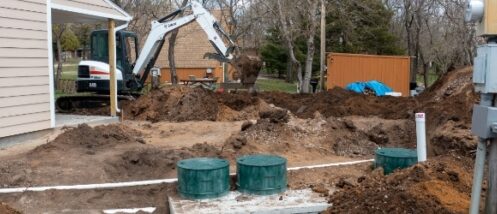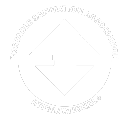A septic system is an essential part of many homes and businesses. It helps to keep wastewater from entering the environment, and it can also help reduce water usage. But with all the different types of septic systems available, it can be hard to know which one is right for your property. Here’s a quick overview of the different types of septic systems and what you must consider when deciding which is best for you.
Conventional Septic Systems
The most common type of septic system is the conventional system. This type of system consists of two parts – a tank that holds the wastewater and an absorption field or drain field that disperses the treated wastewater into the soil. The tank collects solid waste and allows it to decompose before being filtered through the soil, where naturally occurring bacteria break down any remaining waste particles. The main advantage of conventional septic systems is their low cost. However, they require more maintenance than other types of systems due to the need for regular pumping and maintenance of the tank and drain field.
Mound Systems
Mound systems are similar to conventional systems, but they use an elevated mound instead of a traditional drain field. The mound helps prevent contaminants from reaching nearby bodies of water by raising them higher than ground level. Mound systems also have better filtration capabilities since they use sand filters in addition to soil filtration. However, these systems can be costly due to their complex design and construction requirements.
Aerobic Treatment Units
Also known as ATUs, aerobic treatment units are closed-loop septic systems that use oxygenation technology to treat wastewater more effectively than traditional septic tanks. These units contain an aerator that pumps air into the water to create an aerobic environment where bacteria can thrive and break down organic matter faster than in an anaerobic environment (created by a traditional septic tank). This makes ATUs ideal for areas with poor soil conditions or high water tables since they don’t rely on soil filtration for effective treatment. However, these units require more electricity and maintenance than other types of septic systems due to their complexity.
Chamber Systems
Chamber septic systems are an alternative to traditional septic tanks. In a chamber system, water is filtered from the septic tank into specially designed tubes that contain soil. This allows for the same level of filtering and treatment as a conventional septic tank but with a different piping system. Rather than having a gravel-filled underground tank like with traditional systems, chambers utilize compacted soil on their sides to create an absorption area for the wastewater to flow through. This type of septic system requires less time and effort to install, making it a preferred choice due to its convenience and cost-effectiveness.
Drip Distribution Systems
A drip distribution septic system is a great alternative to traditional drainage methods and can be used in a variety of applications. In these systems, specialized drip laterals are installed in the soil to allow for water to filter through slowly, ultimately reaching the drain field for processing and treatment. However, there is a slight drawback: an additional holding tank is required to regulate the rate of drainage away from the septic tank; otherwise, flooding could occur. This ensures that the water drips at a safe rate, safeguarding your residential property from any unwanted flooding issues.
How to Maintain Your Septic System
The most important step in maintaining a septic system is to have your septic system inspected regularly by a professional. An inspection should be done once every year to identify any small problems before they become major issues. In addition, you should have your tank pumped every three years (or more often if needed) to remove solid waste buildup and keep the tank functioning properly.
It’s also important to monitor what goes down the drain daily. This includes food scraps, hair clippings, and hygiene products like tampons and cotton swabs—these things should never be flushed or put down the drain! Instead, dispose of these items in an appropriate trash receptacle whenever possible. You should also install filters on all drains to catch any debris before it reaches the tank.
Call Professionals Today!
Are you in need of septic services such as tank cleaning, repair, installation, and maintenance? Look no further than Salina Septic Service! Our team of experienced experts has the skills to provide comprehensive septic services and will get the job done right. Serving Salina, KS, and surrounding areas, Salina Septic Service has quickly become the preferred choice for efficient, reliable, and affordable service. Contact Salina Septic Service today for all your septic needs!


